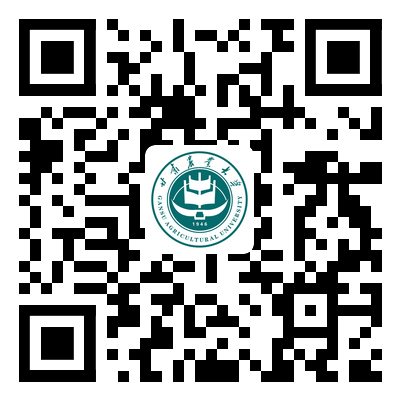
个人简介
颉建明,教授,博士,博士生导师,甘肃农业大学开云手机在线登录入口(中国)开云有限公司院长,甘肃省政协委员。甘肃省瓜菜产业技术体系首席专家,甘肃省“飞天学者”特聘教授,甘肃省“领军人才”,甘肃省设施农业生产技术指导专家组成员,甘肃省园艺作物标准化创建蔬菜专家组成员。兼任甘肃省园艺学会副理事长、中国园艺学会设施园艺分会理事、中国农业工程学会设施园艺工程专业委员会委员。主要从事蔬菜学和设施农业的教学及科学研究工作,完成国家自然基金、国家重点研发计划、国家星火计划等相关项目20余项。获省部级科技进步一等奖2项,二等奖5项,三等奖1项;参编国家“十一五”规划教材2部;在国内外刊物发表研究论文140余篇;制定甘肃省地方标准18项。
电子邮箱:xiejianming@gsau.edu.cn
邮寄地址:甘肃省兰州市安宁区营门村1号
办公地址:甘肃农业大学农科楼5楼520室
办公电话:0931-7631230
研究领域
蔬菜栽培与生理生态
设施设计与环境调控
科研与工作经历
2014-01 至 今,甘肃农业大学,开云手机在线登录入口(中国)开云有限公司,教授
2009-08 至 2014-01,甘肃农业大学,农学院,教授
2003-11 至 2009-08,甘肃农业大学,农学院,副教授
1998-11 至 2003-11,甘肃农业大学,园艺系,讲师
1993-07 至 1998-11,甘肃农业大学,园艺系,助教
研究项目
1. 科技部,国家重点研发计划,2016YFD0201005,西北干旱区设施蔬菜化肥农药减施技术模式建立与示范,2016-01至2020-12,625万元,结题,主持。
2. 国家自然科学基金委员会,面上项目,32072657,河西走廊戈壁日光温室光热环境模拟及营造机制研究,2021-01-01至2024-12-31,58万元,在研,主持
3. 国家自然科学基金委员会,联合基金项目,U22A20136,植物生长用太阳光转换材料的设计及性能调控,2023-01-01至2026-12-31,255万元,在研,参与
4. 国家自然科学基金委员会,国家自然基金地区项目,31260493,弱光及低温弱光下辣椒叶片类胡萝卜素组分变化及其与品种耐性的关系研究,2013.01-2016.12,50万元,结题,主持
5. 甘肃省农业农村厅,甘肃省农业农村厅专项,TYNPZ2022-04,甘肃省特色优势农产品评价—武山韭菜,2022-09至2023-05,27万元,在研,主持
6. 甘肃省农业农村厅,甘肃省农业农村厅专项,TYNPZ2021-04,甘肃省特色优势农产品评价—戈壁蔬菜之西红柿,2021-09至2022-05,30万元,结题,主持
7. 甘肃省科技厅,甘肃省引导科技创新发展专项资金,2018ZX-02,戈壁农业设施园艺关键技术研发与示范,2018.01-2020.12,70万元,结题,主持
8. 农业部,公益性农业科研专项,201203002,适合西北非耕地园艺作物栽培的温室结构与建造技术研究与产业化示范,2012.01-2016.12,178万元,结题,主持
奖励与荣誉
1. 西北非耕地园艺作物栽培基质优化配制技术与产业化示范,获2017年甘肃省科技进步一等奖,排名第2
2. 石羊河流域日光温室蔬菜工厂化育苗及节水高效栽培技术示范推广,获2014年甘肃省科技进步二等奖,排名第1
3. 河西走廊荒漠区日光温室蔬菜生产关键技术集成与示范推广,获2012年甘肃省科技进步二等奖,排名第3
4. 设施园艺无公害生产关键技术研究与示范,获2010年甘肃省科技进步二等奖,排名第3
5. 蔬菜无公害生产技术集成与示范,获2006年甘肃省科技进步二等奖,排名第2
6. 节能日光温室蔬菜高产高效新技术研究与示范,获2002年甘肃省科技进步二等奖,排名第
7. 新型节能日光温室设计建造技术研究与推广,获2004年甘肃省科技进步三等奖,排名第2
发表论文
1. Trehalose alleviates salt tolerance by improving photosynthetic performance and maintaining mineral ion homeostasis in tomato plants[J]. Frontiers in plant science, 2022, 13, 974507. (SCI)
2. Trehalose alleviated salt stress in tomato by regulating ros metabolism, photosynthesis, osmolyte synthesis, and trehalose metabolic pathways[J]. Frontiers in plant science, 2022, 13, 772948. (SCI)
3. Comprehensive fruit quality assessment and identification of aroma-active compounds in green pepper (Capsicum annuum L.), Frontiers in Nutrition, 2023, 9, 1027605 (SCI)
4. Response of rhizosphere microbial community of Chinese chives under different fertilization treatments[J]. Frontiers in microbiology, 2022,13, 1031624.(SCI)
5. Melatonin enhances the low-temperature combined low-light tolerance of pepper (Capsicum annuum L.) seedlings by regulating photosynthesis, carotenoid, and hormone metabolism[J], Environmental and Experimental Botany. 2022, 199: 104868. (SCI)
6. The CaALAD gene from pepper (Capsicum annuum L.) confers chilling stress tolerance in transgenic arabidopsis plants[J]. Frontiers in plant science, 2022, 13, 884990(SCI)
7. 5-Aminolevulinic acid and hydrogen sulphide alleviate chilling stress in pepper (Capsicum annuum L.) seedlings by enhancing chlorophyll synthesis pathway[J]. Plant physiology and biochemistry,2021, 167, 567–576. (SCI)
8. Zinc oxide nanoparticles improve lettuce (Lactuca sativa L.) plant tolerance to cadmium by stimulating antioxidant defense, enhancing lignin content and reducing the metal accumulation and translocation[J]. Frontiers in plant science, 2022,13, 1015745. (SCI)
9. Genome-wide identification of the ZIP gene family in lettuce (Lactuca sativa L.) and expression analysis under different element stress[J]. PloS one, 2022,17(9), e0274319. (SCI)
10. Effects of preharvest methyl jasmonate and salicylic acid treatments on growth, quality, volatile components, and antioxidant systems of chinese chives[J]. Frontiers in plant science, 2022, 12, 767335. (SCI)
11. Effect of methyl jasmonate treatment on primary and secondary metabolites and antioxidant capacity of the substrate and hydroponically grown chinese chives[J]. Frontiers in nutrition, 2022, 9, 859035. (SCI)
12. Melatonin enhanced low-temperature combined with low-light tolerance of pepper (Capsicum annuum L.) seedlings by regulating root growth, antioxidant defense system, and osmotic adjustment[J]. Frontiers in plant science, 2022, 13, 998293. (SCI)
13. Exogenous zeaxanthin alleviates low temperature combined with low light induced photosynthesis inhibition and oxidative stress in pepper (Capsicum annuum L.) plants[J]. Current issues in molecular biology, 2022,44(6), 2453–2471. (SCI)
14. Storage stability of nutritional qualities, enzyme activities, and volatile compounds of "Hangjiao No. 2" chili pepper treated with different concentrations of 1-methyl cyclopropene[J]. Frontiers in plant science, 2022, 13, 838916. (SCI)
15. Effect of slow-release fertilizer on soil fertility and growth and quality of wintering chinese chives (Allium tuberm Rottler ex Spreng.) in greenhouses[J]. Scientific reports, 2021, 11(1), 8070. (SCI)
16. Influence of soil amendment of different concentrations of amino acid water-soluble fertilizer on physiological characteristics, yield and quality of "Hangjiao No.2" Chili Pepper[J]. PeerJ, 2021,9, e12472. (SCI)
17. Alleviating damage of photosystem and oxidative stress from chilling stress with exogenous zeaxanthin in pepper (Capsicum annuum L.) seedlings[J]. Plant physiology and biochemistry, 2021,162, 395–409. (SCI)
18. Optimum parameters for extracting three kinds of carotenoids from pepper leaves by response surface methodology[J]. Separations. 2021; 8(9):134. (SCI)
19. Solar radiation allocation and spatial distribution in chinese solar greenhouses: model development and application[J]. Energies, 2020, 13(5): 1-27.(SCI)
20. Nitrogen source affects the composition of metabolites in pepper (Capsicum annuum L.) and regulates the synthesis of capsaicinoids through the GOGAT–GS pathway[J]. Foods, 2020, 9(2): 150.(SCI)
21. Physiological and transcriptomic responses of Lanzhou Lily (Lilium davidii, var. unicolor) to cold stress[J]. PloS one, 2020, 15(1): e0227921.(SCI)
22. Promoting pepper (Capsicum annuum) photosynthesis via chloroplast ultrastructure and enzyme activities by optimising the ammonium to nitrate ratio[J]. Functional Plant Biology, 2020.(SCI)
23. Slow-release fertilizer improves the growth, quality, and nutrient utilization of wintering chinese chives (Allium tuberosum Rottler ex Spreng.) [J].Agronomy,2020.(SCI)
24. Innovative passive heat-storage walls improve thermal performance and energy efficiency in Chinese solar greenhouses for non-arable lands[J]. Solar Energy, 2019, 190: 561-575.(SCI)
25. Appropriate ammonium-nitrate ratio improves nutrient accumulation and fruit quality in pepper (Capsicum annuum L.) [J]. Agronomy, 2019, 9(11): 683.(SCI)
26. Urea addition promotes the metabolism and utilization of nitrogen in cucumber [J]. Agronomy, 2019, 9(5): 262.(SCI)
27. Gobi agriculture: an innovative farming system that increases energy and water use efficiencies. A review [J]. Agronomy for Sustainable Development, 2018, 38(6). (SCI)
28. Exogenous si alleviation of autotoxicity in cucumber (Cucumis sativus L.) seed germination is correlated with changes in carbohydrate metabolism[J]. Journal of plant growth regulation, 2018, 37(3): 784-793.(SCI)
29. Facility cultivation systems “设施农业”: A chinese model for the planet. advances in agronomy, 2017, 145: 1-42.(SCI)
30. Reversed-phase high-performance liquid chromatography for the quantification and optimization for extracting 10 kinds of carotenoids in pepper (Capsicum annuum L.) leaves. Journal of Agricultural and Food Chemistry, 2017, 65(38):8475-8488(SCI)
31. Transcriptome analysis of pepper (Capsicum annuum) revealed a role of 24-epibrassinolide in response to chilling. Frontiers in Plant Science, 2016, 7(SCI, IF 4.495)
32. Autotoxicity in cucumber (Cucumis sativus L.) seedlings is alleviated by silicon through an increase in the activity of antioxidant enzymes and by mitigating lipid peroxidation. Journal of Plant Biology, 2016, 59(3):247-259(SCI)
33. Brassinosteroid alleviates chilling-induced oxidative stress in pepper by enhancing antioxidation systems and maintenance of photosystem II. Acta Physiologiae Plantarum, 2015, 37:222-233(SCI)
34. 黑腐病菌效应因子XopR的甘蓝靶标基因BobHLH34的克隆及功能分析[J].园艺学报,2023,50(02):319-330.
35. 不同外源硒对小白菜品质及营养元素含量的影响[J].浙江农业学报,2022,34(10):2199-2208.
36. 外源褪黑素对低温弱光胁迫下辣椒叶绿素荧光和抗氧化系统的影响[J].浙江农业学报,2022,34(09):1935-1944.
37. 不同施肥模式对结球甘蓝产量、养分吸收利用及土壤酶活性的影响[J].中国土壤与肥料,2022(06):73-81.
38. 不同生物有机肥用量对韭菜产量、品质及养分利用的影响[J].中国土壤与肥料,2019(06):204-211.
39. 辣椒素类物质的生物合成影响因素及其生理功能研究进展[J].园艺学报, 2019, 46(9):1797-1812.
40. 温室墙体中覆铝箔封闭空气腔热工性能模拟分析[J].农业工程学报,2017,33(2):227-233.
41. 生物肥部分替代化肥对花椰菜产量、品质、光合特性及肥料利用率的影响[J].草业学报,2015,24(01):47-55.
42. 外源ALA和Spd对低温弱光下辣椒幼苗光合作用及抗氧化系统的影响[J].中国农业科学,2013,46(11):2298-2306.
43. 低温弱光下辣椒叶片PSII光能吸收和转换变化及与品种耐性的关系[J].中国农业科学,2011,44(9):1855-1862.
44. 弱光或低温弱光下辣椒叶片类胡萝卜素含量与品种耐性的关系[J].中国农业科学,2010,43(19):4036-4044.
45. 持续低温弱光及之后光强对辣椒幼苗光抑制的影响[J].农业工程学报, 2008, 24(5):231-234.
授权专利
1. 辣椒叶片中类胡萝卜素组分的提取及其含量的定量检测方法(发明专利:ZL201610064004.5),第1完成人
2. 一种日光温室用采光面(实用新型:ZL 2015 2 0903835.8),第1完成人
制定甘肃省地方标准
1. DB62/T2044-2011:日光温室蔬菜基质栽培黄瓜生产技术规程第1完成人
2. DB62/T2042-2011:日光温室蔬菜基质栽培西葫芦生产技术规程第1完成人
3. DB62/T2047-2011:日光温室蔬菜基质栽培西瓜生产技术规程第1完成人
4. DB62/T2737-2016:农业废弃物基质化利用牛(羊)粪处理技术规程第2完成人
5. DB62/T2741-2016:农业废弃物基质化利用栽培基质复配技术规程第2完成人
6. DB62/T1984-2016:高原夏菜青花菜生产技术规程第3完成人
7. DB62/T2738-2016:农业废弃物基质化利用玉米(棉花)秸秆处理技术规程第4完成人
8. DB62/T2739-2016:农业废弃物基质化利用菌渣处理技术规程第4完成人
9. DB62/T2740-2016:农业废弃物基质化利用玉米秸秆与牛粪混合处理技术规程第4完成人










